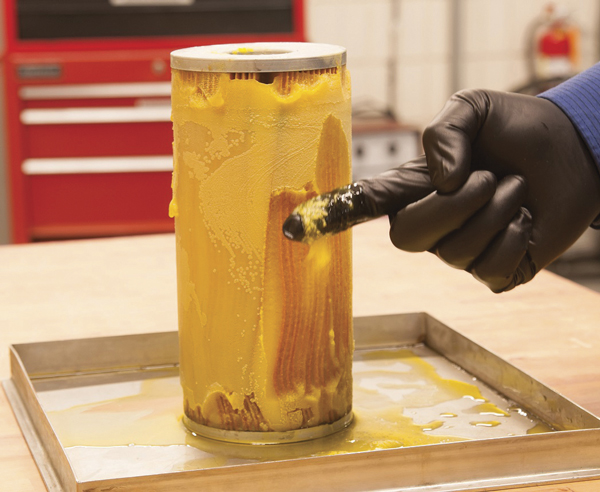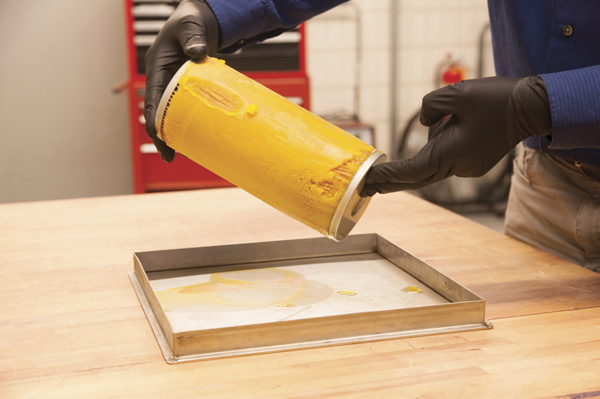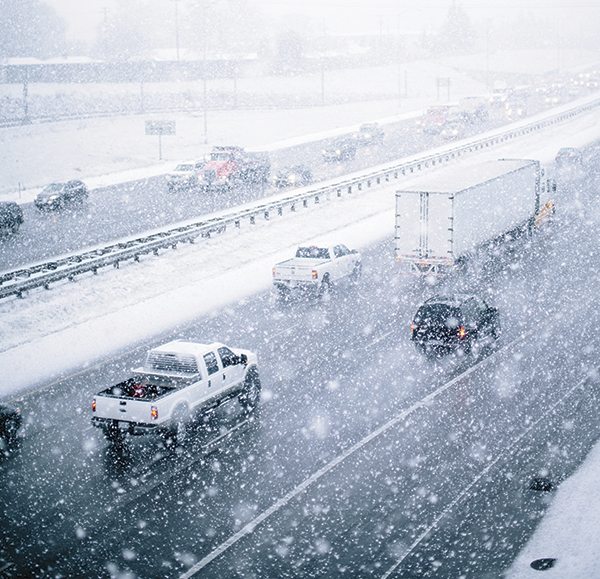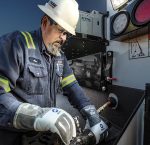Diesel fuel gelling is a common problem that often impacts engine performance and results in downtime. Although it can occur year-round, it is most prevalent in winter with the effects of cold temperatures on #2 diesel. Diesel fuel gelling causes several performance-related issues including significant engine power loss and difficulty starting or keeping the engine running. Sometimes blamed on the fuel filter, diesel fuel gelling plugs the filter, preventing fuel from flowing properly. This restricted flow may keep the engine from starting. Even if it does start, it might not stay running for long.
Gelling problems are typically caused by the effects of temperature on paraffin, a component of diesel fuel. Paraffin waxes are combustible, adding power when burned in the engine. However when temperatures drop, diesel will start to solidify. The phases of fuel gelling include cloud point, pour point, and cold-filter plug point.
CLOUD POINT
Cloud point is the temperature at which paraffin begins to form cloudy wax crystals. When the fuel temperature reaches cloud point, the wax crystals begin to form. Typically, cloud point temperatures range from -18 degrees to 20 degrees F. Depending on fuel quality, they can be as high as 40 degrees F.

CFPP
The point where the filter plugs and operations cease is the cold-filter plug point (CFPP). CFPP and cloud point depend on fuel grade, fuel quality, and temperature. Due to viscosity, concerns are amplified by biofuel content. Produced using different oils, such as soybean, corn, and animal fat, biofuels have an even higher gelling temperature, increasing the chance of filter clogging.
Many states mandate when fuel stations switch to winterized diesel blends. However, the gel point of winterized blends varies widely. Using #1 diesel or a winterized diesel blend isn’t foolproof. There’s high risk for encountering poor quality or unconditioned fuel. In extremely cold climates, many operators choose more reliable solutions to protect their vehicle or equipment.
For fuel to flow properly, the fuel temperature must be above the pour point. When fuel has gelled, pushing the vehicle or equipment into a garage for several hours may temporarily fix the gelling issue. Indoors, it takes eight to 10 hours or a full day to resolve a gelling problem. If temperatures remain cold or an interior space is unavailable, this is an inadequate solution, resulting in downtime.
A more reliable choice, diesel fuel warmers are a dependable, low-maintenance solution that heats diesel fuel to safe operational temperatures. Fuel heating options include electric and engine coolant-based fuel warming. Multiple warmers can be used in conjunction in extremely cold climatic conditions. Phillips & Temro offers a range of in-tank and in-line fuel warming products. The right solution for a specific vehicle or stationary equipment depends on the fuel issues and the equipment operation.
DIESEL FUEL WARMERS
Using diesel fuel warmers provides multiple benefits. First, fuel warmers are a trouble-free solution to diesel gelling in cold-weather environments; they deliver heat to the fuel in the tank and even draw fuel out of the tank. Using diesel fuel warmers can also reduce or even eliminate fuel additive use. In addition to warming fuel, fuel warmers reduce fuel viscosity, improving engine operating efficiency.
Speaking of efficiency, when using fuel warmers, your truck/equipment won’t spend a day in the garage due to diesel gelling. That gives you more uptime with your trucks and equipment to get those jobs done no matter what.
Fuel warmers are also available for original equipment manufacturer (OEM) and aftermarket installation in three ways: in-tank fuel warming, in-line fuel warming, and electric in-line heater (hotline).

Diesel fuel contains paraffin wax. When temperatures drop, the wax crystallizes and the fuel becomes clouded. Even colder temperatures gel the fuel causing clogged fuel lines, filters, and engine stall outs.
IN-TANK WARMING
Using an in-tank fuel warmer prevents fuel gelling inside the tank as long as the engine operates for long periods under moderate to full engine load. This improves fuel flow through hose and filter and stabilizes fuel temperature above the pour point.
IN-LINE WARMING
Using an in-line fuel warmer prevents gelling in the primary fuel filter. In-line warmers connect to the fuel line and heat the fuel closest to the primary fuel filter. This kind of diesel fuel warming does not require fuel tank modifications.
ELECTRIC IN-LINE HEATER
Using an electric in-line heater provides warm fuel for engine start-up. Electric in-line warmers operate on 12- or 24-volt power. This kind of fuel warming requires no fuel tank modifications, yet replaces a section of the fuel line. Electric in-line heaters can be used in conjunction with other fuel warming devices.
Winter isn’t over, and it’s likely the worst is yet to come. Stop rotating your trucks and equipment in and out of the garage to prevent or fix diesel gelling. Instead, take preventive measures to keep your full fleet running all year long.
FOR MORE INFORMATION
Find out which fuel warming product is right for your application, visit www.phillipsandtemro.com/solutions/fuel-fluid-heating or call 800.328.6108.
_______________________________________________
MODERN WORKTRUCK SOLUTIONS:
JANUARY 2020 ISSUE
Did you enjoy this article?
Subscribe to the FREE Digital Edition of Modern WorkTruck Solutions magazine.





2 Comments
Leave a Reply2 Pings & Trackbacks
Pingback:Semi Truck Fuel Tank Heaters – suluovagazete
Pingback:Semi Truck Fuel Tank Heaters – shorelinehicap